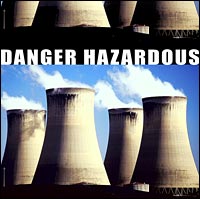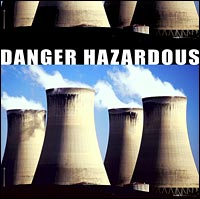If the media and the New York Times editorial page are any guide, nuclear power is the new green-energy option being embraced by environmentalists. This is not a new idea. The first mainstream statement of the “nuclear option” came from a 2003 report by MIT professors John Deutch and Ernest Moniz, “The Future of Nuclear Power.”
As the duo’s press release put it: “The nuclear option should be retained precisely because it is an important carbon-free source of power … Taking nuclear power off the table as a viable alternative will prevent the global community from achieving long-term gains in the control of carbon dioxide emissions.”

Image: clipart.com
While I share their alarm at our failure to address the problem of overabundant greenhouse-gas emissions, I am equally alarmed by their willingness to accept this dangerous, complicated, and politically controversial technology as a fix for our looming climate crisis.
Let’s begin with dangerous, setting aside the obvious problems raised by Three Mile Island and Chernobyl. In the past few years, we have seen the horror that suicide bombers set loose in restaurants from Tel Aviv to Baghdad, and the danger of jets flying into skyscrapers. Do we really want to see what happens if a terrorist attacks a nuclear power plant? Are we so arrogant as to believe that these facilities are not already tempting, and vulnerable, targets?
Let’s move on to complicated. The primary waste product of nuclear power, spent fuel rods, remains toxic for thousands of years. We do not yet know how to detoxify these waste products and, despite 20-some years of trying, we have not yet been able to establish a long-term repository anywhere in the United States.
Money is not the issue. We have the resources to build a nuclear-waste storage facility — under the Nuclear Waste Policy Act, customers of nuclear-generated electricity have been paying a $0.001 per kilowatt-hour fee on their electric bills since 1983. Utilities pass the money into an account that has generated $24 billion over the years. Despite assurances that the proposed repository at Yucca Mountain in Nevada will last longer than the waste will be toxic, serious failings in storage technology and the risks of transportation have resulted in widespread opposition. Today, our nuclear waste goes into “spent fuel pools” at nuclear power plants like the one at Indian Point, just 35 miles north of New York City.
If the problem of detoxifying waste is beyond current technology — which is why we need to store it for thousands of years — what about the technology of power generation? The MIT study acknowledges that no power plant can be made risk-free. In reality, all technology carries risks. When we drive on an interstate highway, we face the risk of a crash. We accept the risk because it is relatively low, and because the effect of the risk is localized. A mistake in a nuclear power plant, however, can cause long-standing, widespread damage to people and ecosystems. Just ask the people who survived Chernobyl. The risk may be low, but the potential impact is high.
That leads to the politics. No one wants to host the nuclear-waste repository. No one wants a nuclear power plant next door. This is not an engineering or economic issue, but one of politics. In an increasingly crowded and interdependent world, people have grown more sensitive about questions of land-use development. Environmental justice has also reached the political stage, because the rich are better able to defend themselves against environmental insults than the poor. In the United States, local politics in many places has become the politics of land use and development. If we can’t site Wal-Marts without a lengthy battle, why does anyone seriously think that we will be able to site the hundreds of new nuclear power plants that may be necessary to meet our energy needs without increasing greenhouse-gas emissions?
Moreover, why waste our time and effort on a so-called solution to climate change and high oil prices that has no real chance of gaining political traction? The largest impacts of global warming lie in the future, and are global in scope. But the problem of a nuclear accident would be comparatively local, and would potentially last for decades or centuries. The American political process is designed to respond to intense, local issues — that is why constructing even one nuclear power plant is a non-starter.
I agree that the answer to reducing carbon-dioxide emissions and reducing energy costs is to develop new technology. I agree that the need for a technological fix is urgent. The problem of energy prices and global climate change is real, and reaching crisis proportions. The American government should start a major research and development effort to create new power sources that are small-scale, decentralized, environmentally safe, and feasible in the political climate of the U.S. in the first decade of the 21st century.
Despite the promises of a previous generation, nuclear power never became “too cheap to meter.” Rather, it became a discredited, mid-20th century mistake. Raising this issue is a distraction from the real work we need to undertake. We need to put our brain power to work on a way of reducing energy prices and emissions that can actually be implemented here in the United States — and very, very soon.


